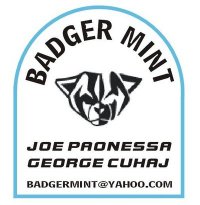
PREV ARTICLE
NEXT ARTICLE
FULL ISSUE
PREV FULL ISSUE
EXPERIMENT: WERE ANCIENT COINS WERE STRUCK HOT OR COLD?
George Cuhaj forwarded this announcement about an interesting experiment planned for the upcoming Summer Seminar at the Colorado Springs headquarters of the American Numismatic Association.
-Editor
There have been several interesting discussions in various arenas on the topic of whether ancient coins were struck hot or cold. Our plan is now to do this striking experiment in a controlled and properly documented fashion in order to compare the results of hot-struck and cold-struck coins.
Process:
Materials:
Staff: the same striker, die setter, blank setter, and torch assistant. On the first day, proceed by first test striking 10 blanks as test strikes, then strike an additional 100 blanks cold, at a comfortable speed. On the second day, proceed by first test striking 10 blanks hot as test strikes, then strike an additional 100 hot blanks, at a comfortable speed. These hot blanks would be heated approximately 10 at a time to red hot (close to the melting point), and then transferred to the die as safely (but also as quickly) as possible and struck. The dies would be of Greek style, with relief designs on both the hammer and anvil dies, images can now be seen on the Badger Mint Facebook page. The hammer die will be marked, and we will attempt to maintain die alignment. With the intention of publication, we will study the results after each group of 100 is finished as well as scan or photograph all 200 specimens as a record. We will also record observations on the striking process, including speed. The cost of the silver and the fabrication of blanks and dies will account for most of the expense of this experiment. If anyone on this list would like to contribute to this project (and receive some of the finished products in return), we are currently seeking 45 contributors at a price of $65 each. Please mail checks to The Badger Mint, PO Box 2, Iola, WI 54945. Each contributor will receive two hot strikes and two cold strikes, sent postpaid. When sending in payment, choose two numbers between 11 and 98, with alternatives. Those will be the strikes you will receive. The ANA Museum will receive the dies as well as two hot and two cold strikes. Best wishes,
Scott Rottinghaus
The Numismatic Bibliomania Society is a non-profit organization promoting numismatic literature. See our web site at coinbooks.org. To submit items for publication in The E-Sylum, write to the Editor at this address: whomren@gmail.com To subscribe go to: https://my.binhost.com/lists/listinfo/esylum All Rights Reserved. NBS Home Page Contact the NBS webmaster 
|
 I'd like to announce a little experiment in hot- and cold-striking brought to you by Scott Rottinghaus, and the Badger Mint Staff - George Cuhaj and Joe Paonessa. This exercise is to be conducted during Session I of the ANA Summer Seminar in Colorado Springs, at the end of this month.
I'd like to announce a little experiment in hot- and cold-striking brought to you by Scott Rottinghaus, and the Badger Mint Staff - George Cuhaj and Joe Paonessa. This exercise is to be conducted during Session I of the ANA Summer Seminar in Colorado Springs, at the end of this month.